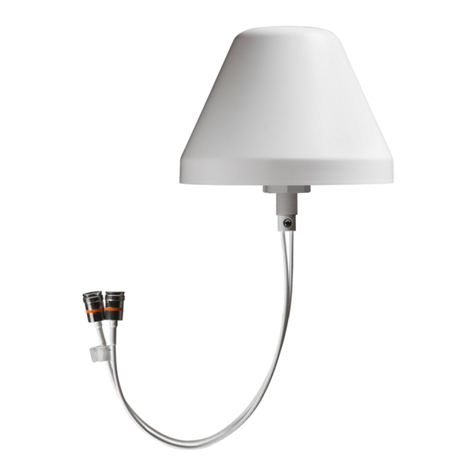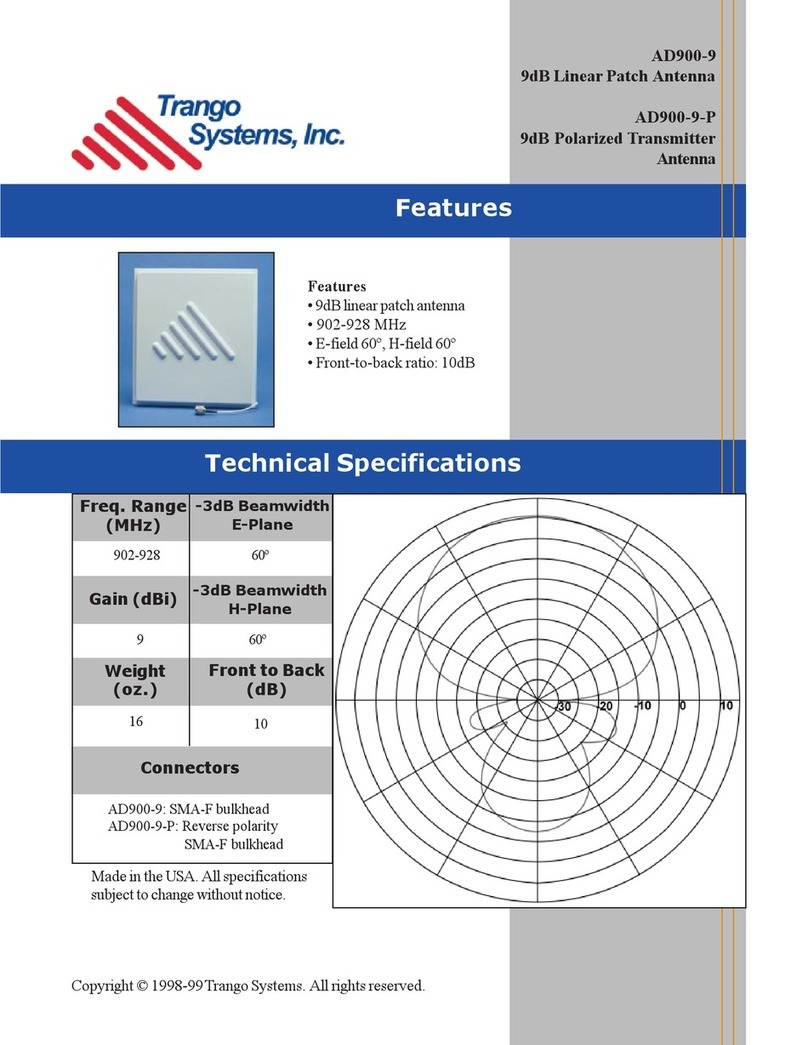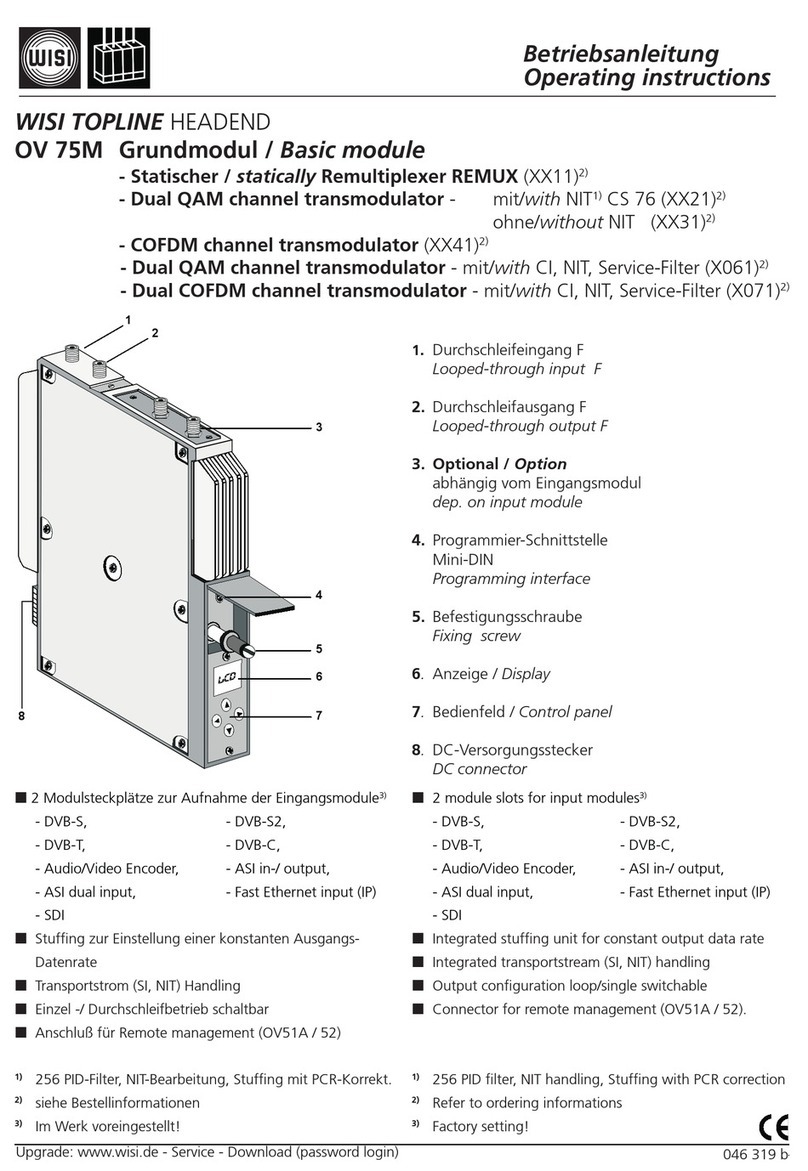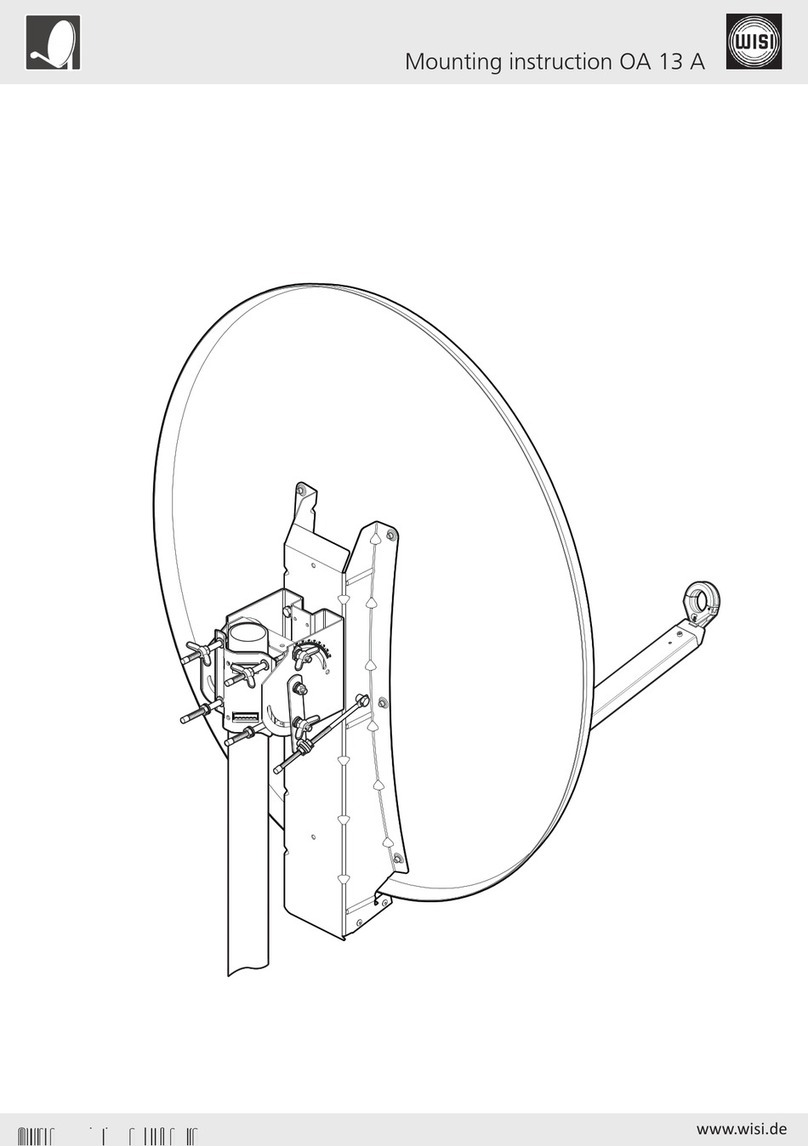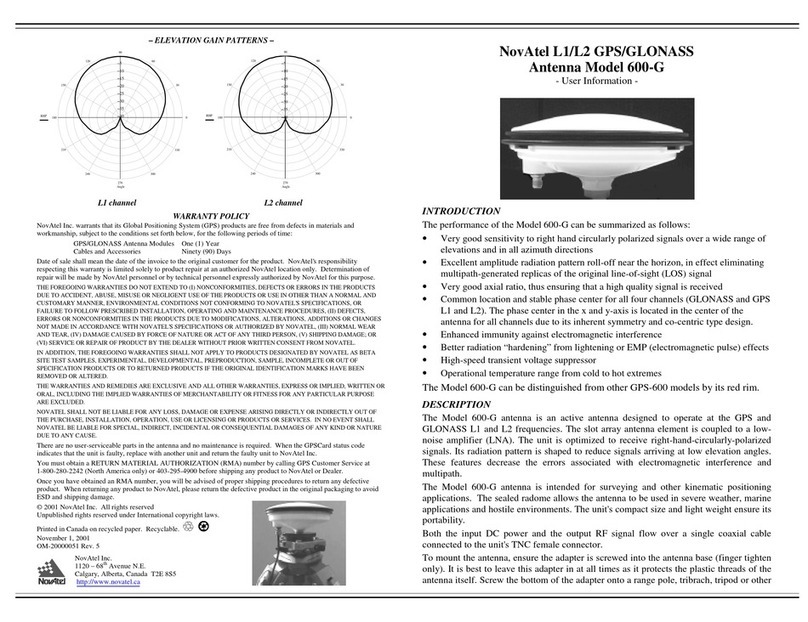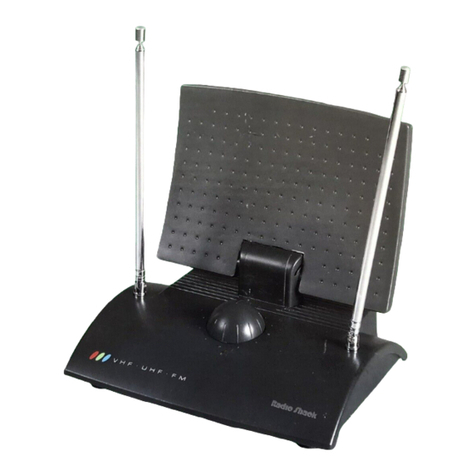
- 3 -
(GB) Installation instructions and warnings
Select the installation location!
Due to the wind forces which may occur, the antenna is best installed
at the base of an aerial mast, since this usually still provides a clear
line of sight to the satellite. The mast should have a diameter of 40-
76 mm, with a minimum material thickness of 3.2 mm, and should
be made of galvanized steel tube.
Water or gas pipes are naot suitable materials for aerial masts
and may result in injury.
Clamped length the clamped length of the mast (le) should be at
least one sixth of the free length (lf).
Twisting: aerial masts and all pipe connections must be secured to
prevent twisting.
Grounding: your aerial system must be correctly grounded. Consult
an electrician or your dealer for advice.
The following do not need to be grounded:
aerial systems which are at least 2m below the upper edge of the
roof and less than 1.5m away from the building (see fig.)
High voltages: take care that your aerial system is sufficiently far
away from overhead high-voltages lines.
***
(F) Dangers et consignes d'installation
Déterminer l'emplacement du montage!
Du fait de la force du vent, le antenne doit être montée sur le pied
d'une antenne qui présente également une vue dégagée vers le sa-
tellite.
Il est interdit d'utiliser les tuyaux d'eau et de gaz comme sub-
stitute du mât car ils représentent un danger potentiel.
Longueur de haubanage La partie de haubanée (le) du mât doit avoir
une longueur minimale de un sixième de la longueur libre (lf).
Rotation:Le mât de l'antenne et tous les raccords tubulaires doivent
être parfeitement bloqués contre toute rotation.
Mise à la terre: Votre antenne doit être mise à la terre de façon
conforme. Faites appel à un professionnel.
Ne nécessitent pas de mise à la terre:
Les mâts d'antenne qui sont montés à plus de 2m sous la gouttière
et à moins de 1,5 du bâtiment (voir fig.)
Haute tension: Veillez à ce que votre installation respecte la di-
stance minimale par rapport au réseau des lignes aériennes haute
tension voir fig.)






